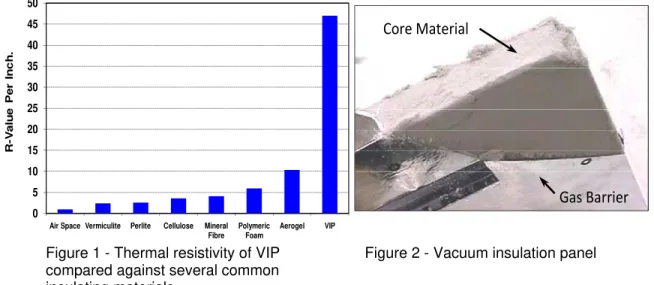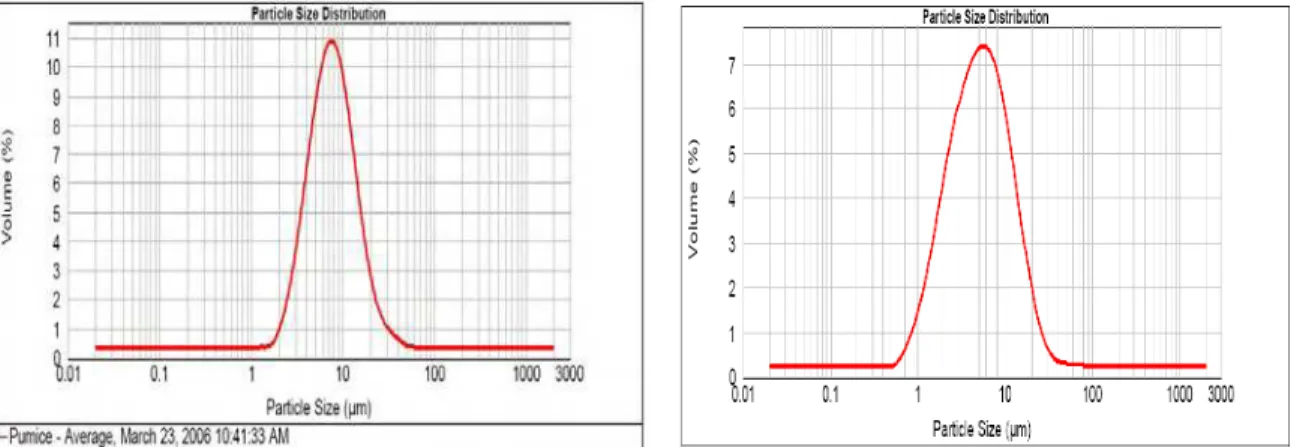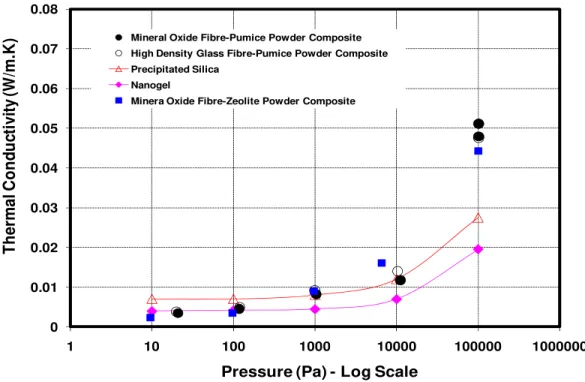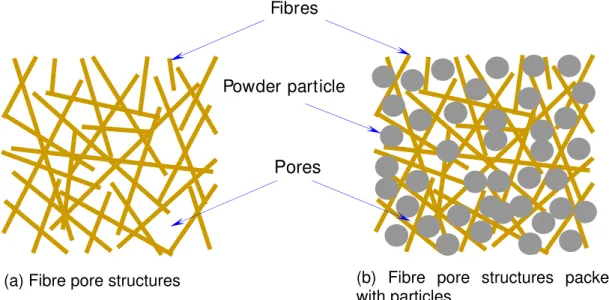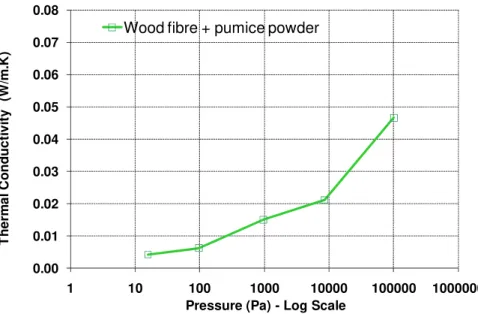Publisher’s version / Version de l'éditeur:
Vous avez des questions? Nous pouvons vous aider. Pour communiquer directement avec un auteur, consultez la première page de la revue dans laquelle son article a été publié afin de trouver ses coordonnées. Si vous n’arrivez pas à les repérer, communiquez avec nous à PublicationsArchive-ArchivesPublications@nrc-cnrc.gc.ca.
Questions? Contact the NRC Publications Archive team at
PublicationsArchive-ArchivesPublications@nrc-cnrc.gc.ca. If you wish to email the authors directly, please see the first page of the publication for their contact information.
https://publications-cnrc.canada.ca/fra/droits
L’accès à ce site Web et l’utilisation de son contenu sont assujettis aux conditions présentées dans le site LISEZ CES CONDITIONS ATTENTIVEMENT AVANT D’UTILISER CE SITE WEB.
9th International Vacuum Insulation Symposium [Proceedings], pp. 1-9,
2009-09-17
READ THESE TERMS AND CONDITIONS CAREFULLY BEFORE USING THIS WEBSITE. https://nrc-publications.canada.ca/eng/copyright
NRC Publications Archive Record / Notice des Archives des publications du CNRC :
https://nrc-publications.canada.ca/eng/view/object/?id=3403694e-1106-4a54-b3b9-785f5986b5c5 https://publications-cnrc.canada.ca/fra/voir/objet/?id=3403694e-1106-4a54-b3b9-785f5986b5c5
NRC Publications Archive
Archives des publications du CNRC
This publication could be one of several versions: author’s original, accepted manuscript or the publisher’s version. / La version de cette publication peut être l’une des suivantes : la version prépublication de l’auteur, la version acceptée du manuscrit ou la version de l’éditeur.
Access and use of this website and the material on it are subject to the Terms and Conditions set forth at
Fibre-powder composite as core material for vacuum insulation panel
Fibre-powder composite as core
material for vacuum insulation
panel
Mukhopadhyaya, P.; Kumaran, M.K.; Normandin, N.; Van Reenen, D.
NRCC-51407
A version of this document is published in : 9th International Vacuum Insulation Symposium (London, UK,
September-17-09), pp. 1-9
The material in this document is covered by the provisions of the Copyright Act, by Canadian laws, policies, regulations and international agreements. Such provisions serve to identify the information source and, in specific instances, to prohibit reproduction of materials without written permission. For more information visit http://laws.justice.gc.ca/en/showtdm/cs/C-42
Les renseignements dans ce document sont protégés par la Loi sur le droit d’auteur, par les lois, les politiques et les règlements du Canada et des accords internationaux. Ces dispositions permettent d’identifier la source de l’information et, dans certains cas, d’interdire la copie de documents sans permission écrite. Pour obtenir de plus amples renseignements : http://lois.justice.gc.ca/fr/showtdm/cs/C-42
FIBRE-POWDER COMPOSITE AS CORE MATERIAL FOR VACUUM
INSULATION PANEL
Dr. Phalguni Mukhopadhyaya, Associate Research Officer, National Research Council Canada – Institute
for Research in Construction, 1200 Montreal Road, Campus-Building M-24, Ottawa, Ontario, K1A 0R6, Canada, Tel: 613-993-9600, Email: phalguni.mukhopadhyaya@nrc-cnrc.gc.ca
Dr. M. Kumar Kumaran, Principal Research Officer, National Research Council Canada – Institute for
Research in Construction, 1200 Montreal Road, Campus-Building M-24, Ottawa, Ontario, K1A 0R6, Canada, Tel: 613-993-9611, Email: kumar.kumaran@nrc-cnrc.gc.ca
Ms. Nicole Normandin, Technical Officer, National Research Council Canada – Institute for Research in
Construction, 1200 Montreal Road, Campus-Building M-24, Ottawa, Ontario, K1A 0R6, Canada, Tel: 613- 991-4190, Email: nicole.normandin@nrc-cnrc.gc.ca
Mr. David van Reenen, Technical Officer, National Research Council Canada – Institute for Research in
Construction, 1200 Montreal Road, Campus-Building M-24, Ottawa, Ontario, K1A 0R6, Canada, Tel: 613-990-4093, Email: david.vanreenen@nrc-cnrc.gc.ca
Theme 1: The VIP Challenge - Materials and Manufacturing
Key words: Vacuum Insulation Panel (VIP), Core Material, Fibre-Powder Composite,
Thermal Properties
Abstract: Core material used in the construction of vacuum insulation panel plays a very
important role in the thermal performance, mechanical properties and service life of the insulation system. Commonly used core materials are precipitated silica and nanogel. The nano-porous structures of these core materials make them ideal candidates for the construction of vacuum insulation panel. However, these materials are not the traditional thermal insulation materials used in building construction. A recent study to search for alternative core materials conducted at the National Research Council, Canada - Institute for Research in Construction (NRC-IRC) reveals that fibre-powder composites made with traditional fibre insulation materials and volcanic powders have promising potential to be used as core materials for the construction of high-performance vacuum insulation panel. This paper presents the construction features of the fibre-powder composite and its thermal properties. The scopes of future investigation on the fibre-powder composite to be used in the construction of vacuum insulation panel have also been identified.
1. INTRODUCTION
In these times when the pressure for environmental restraint is mounting, any new technology that assists efforts to reduce energy consumption is welcome. Reduction of energy consumption in every aspect of our daily life is considered to be the key to tackle the issues related to global warming and its adverse effects on the environment. Buildings account for more than 35% of total national energy consumption in any developed country. Thermal insulation is one of the key components for energy efficiency of the built environment. Recently, energy specialists in Europe calculated that an optimum thickness for contemporary insulation materials in buildings should be up to 30 to 50 cm (Simmler et al., 2005), which is much higher than prevailing practices. But the higher thickness of insulation in buildings also increases the material consumption in construction and thus cannot be considered as a sustainable solution to improve energy efficiency of the built environment. In fact, it will only deteriorate the situation further. The solution for this riddle is to find affordable high performance thermal insulation materials and develop practical building applications for such materials. Use of vacuum insulation panel (VIP), up to ten times more efficient than contemporary thermal products (Figure 1), in building envelope construction is one viable solution that can help to achieve a higher degree of energy
9th International Vacuum Insulation Symposium 17th and 18th September 2009 at the Royal Institution of Great Britain in London
efficiency and reduced thickness of building envelopes at the same time. That means less consumption of energy, construction materials and fewer materials to recycle at the end of the service life. However, at this moment VIPs are rarely used for building construction or selectively used if space for traditional insulation is too expensive or not available (Fricke et al. 2008). The primary reasons for this lack of application of VIP in the building construction industry are:
(1) Higher cost of VIP compared to traditional insulation materials.
(2) Lack of confidence about the long-term performance of VIP and vacuum technology.
(3) Absence of application/design guidelines, material standards/specifications and installation/handing instructions on the construction site.
It is well-known that the costs of the core and gas barrier materials (Figure 2) contribute significantly towards the higher cost of VIP (Simmler et al. 2005). This paper focuses on the development of alternative core materials, using traditional and locally available materials, for VIP construction that can potentially reduce the cost.
0 5 10 15 20 25 30 35 40 45 50
Air Space Vermiculite Perlite Cellulose Mineral Fibre Polymeric Foam Aerogel VIP R-V a lu e Pe r I n c h . Gas Barrier Core Material
Figure 1 - Thermal resistivity of VIP compared against several common insulating materials
Figure 2 - Vacuum insulation panel
2. ROLE OF CORE MATERIALS
The two primary factors that determine the long-term thermal performance of the vacuum insulation panel are:
(1) Effectiveness of gas barrier, and (2) Performance of core material.
While the gas barrier helps to maintain the air and vapour tight environment, the core material provides the mechanical and insulating properties. Various studies have indicated that very slowly but steadily air and/or vapour will penetrate through the gas barrier or seam joints into the core material to raise the internal pore pressure and thus increase the thermal conductivity of core material (i.e. reducing the thermal insulating capacity of the vacuum insulation panel). The extent of this thermal insulating capacity reduction depends
at the initial stage of aging on the capacity of the getter/desiccant1 material to adsorb residual or permeating atmospheric gases or water vapour inside the VIP enclosure but ultimately on the relationship between pore pressure and the thermal conductivity change of the core material. The most commonly used core materials, as reported in the literatures, are glass fibre, open-cell polyurethane foam, open-cell polystyrene foam, precipitated silica and nanogel (e.g. carbon/silica aerogel) (Heinemann et al. 1999). The relationships between the thermal conductivity and the pore pressure for some of these materials are shown in Figure 3. It is very obvious from these figures that there is a threshold limit of pore pressure beyond which the thermal conductivity of core materials increases almost exponentially and for some core materials this threshold value is as low as 10 Pa and for some others it is as high as 10000 Pa. This phenomenon concerning the ability of the open-porous core material to maintain lower thermal conductivity at higher pore pressure is directly related to the pore structure of the material (Tye 1969; Simmler et al. 2005). Core materials with smaller open pores have the greater ability to maintain lower thermal conductivity at higher pore pressure (Figure 4). For this reason precipitated silica, fumed silica and nanogel materials with micro or nano-porous structure maintain a very low vacuum-level thermal conductivity characteristic almost all the way up to a pressure level of 10,000 Pa, unlike glass fibre, open-cell polyurethane foam and open-cell polystyrene foam. Incidentally, nano-porous thermal insulating core materials are much more expensive than purely micro- or macro-porous materials. This is not because the basic materials required for the construction of nano-porous material are expensive but the manufacturing process to impart the nano-porous open-cell structure is significantly cost intensive. Quite naturally, the expensive core material is one of the primary reasons behind the higher cost of vacuum insulation panels (Simmler et al. 2005).
To overcome this cost barrier for the mass application of vacuum insulation panels in the building construction industry, NRC-IRC researchers are engaged in an initiative (Mukhopadhyaya et. al., 2008) that investigates the possibility to develop low-cost core materials for the vacuum insulation panel.
1
Getter/desiccant is added inside the core material to adsorb residual or permeating atmospheric gases or water vapour in the VIP enclosure. The addition of getter/desiccant increases the performance and longevity of VIPs. 0.000 0.005 0.010 0.015 0.020 0.025 0.030 0.035 0.040 1 10 100 1000 10000 100000 T h er mal C o n d u cti vi ty (W /m .K )
Pressure (Pa) - Log Scale
Nanogel (Barrier Ultra-R)
Open-Cell Polyurethane Open-Cell Polystyrene Precipitated Silica 0.000 0.004 0.008 0.012 0.016 0.020 0.024 0.028
1.0E-02 1.0E-01 1.0E+00 1.0E+01 1.0E+02 1.0E+03 1.0E+04 1.0E+05 Gas Pressure [Pa]
fumed silica / aerogel pore diameter 10 mm 1 mm 0.1 mm 0.01 mm 0.001 mm T h e rm a l C o n d u c ti v it y [ W /( m K )]
Figure 3 - Change of thermal conductivity of core material with the pore pressure (Source
http://www.glacierbay.com/vacpanelinfo.asp)
Figure 4 - Thermal conductivity as a function of pore diameter
9th International Vacuum Insulation Symposium 17th and 18th September 2009 at the Royal Institution of Great Britain in London 3. FIBRE-POWDER COMPOSITE AS CORE MATERIAL
NRC-IRC researchers have developed potentially low-cost core materials, using locally available traditional insulating materials. These materials are essentially layered composites made with thin slices of fibre insulation board and fine insulating powder materials. Further details about the fibre-powder composite core materials are provided in the following sections.
3.1 Fibre insulation boards
Two fibre insulation boards under consideration are Mineral Oxide Fibre Board or MOFB (density ≈ 230 kg/m3) and High Density Glass Fibre Board or HDGF (density ≈ 104 kg/m3
). Thermal measurements for these fibre boards, using vacuum guarded hot plate or VGHP (Figure 5) apparatus (mean temperature ≈ 26 ± 2°C), at various pressure levels are shown in Figure 6. The fibre insulation materials lost almost 80% of its thermal insulating capacity at pore pressure level 10,000 Pa while compared with its thermal insulating capacity at vacuum.
Fixed End Vacuum Enclosure
Cold Plates
Main Guarded Heater Stand 0.00 0.01 0.02 0.03 0.04 0.05 0.06 0.07 0.08 1 10 100 1000 10000 100000 1000000 Th e rm a l C o ndu ct iv it y (W / m .K )
Pressure (Pa) - Log Scale
Mineral Oxide Fibreboard High Density Glass Fibreboard
Figure 5 - Vacuum guarded hot plate apparatus
Figure 6 - Thermal properties of fibre insulation materials
3.2 Powder insulation materials
Finely graded powders have been used as core materials for evacuated panels for its premium thermal performance (McElroy et al. 1990; Stovall et al. 1997). The powder materials under consideration in this study are Pumice (amorphous aluminium silicate) and Zeolite (hydrated aluminosilicate minerals). These materials are locally available in Canada (Pumice: Mount Meager, BC; Zeolite: Kamloops, BC). The particle size distribution curves of the finely graded Pumice and Zeolite powders used in this study are as shown in Figures 7 and 8. In order to determine the thermal characteristics at various pressure levels, a purpose-built powder-filled ‘evacuation box’ (Figure 9) was placed inside the VGHP (mean temperature ≈ 24 ± 2°C). The thermal properties of the Pumice powder (packed density of ≈ 660 kg/m3
inside the evacuation box) and Zeolite powder (packed density ≈ 440 kg/m3
Figure 7 - Particle size distribution (Pumice powder)
Figure 8 - Particle size distribution (Zeolite powder)
0 0.01 0.02 0.03 0.04 0.05 0.06 0.07 0.08 1 10 100 1000 10000 100000 1000000 T he rm a l C onduc ti vi ty (W /m .K )
Pressure (Pa) - Log Scale Pumice Powder Zeolite Powder 305 mm 305 mm 35 mm 45 mm 15 mm Openings for Evacuation
Figure 9 - Evacuation box for the powder materials
Figure 10 - Thermal properties of Pumice and Zeolite powders
3.3 Fibre-powder composite
The fibre-powder composite core materials are made with fibre (i.e. mineral oxide fibre and high density glass fibre) and powder (Pumice and Zeolite) insulation materials. The first composite core material (density ≈ 340 kg/m3) has thin layers (≈ 3.5 mm each) of
mineral oxide fibre board (MOFB) and pumice powder sandwiched together as shown in
Figure 11. In the second composite (density ≈ 320 kg/m3
), the layers of MOFB are replaced with High-Density Glass Fibreboard (HDGF). The third composite material
(density ≈ 340 kg/m3) has thin layers (≅ 3.5 mm each) of MOFB, same as the first
composite core material, and zeolite powder sandwiched together. These composite materials were placed inside the evacuation box (Figure 9) and thermal properties were measured using the VGHP apparatus (mean temperature: MOFB-pumice = 27°C; HDGF-Pumice = 25°C; MOFB-Zeolite = 25°C). The relationships between the pore pressure and the thermal conductivity of these three newly introduced low-cost core materials are shown in Figure 12. This figure also draws comparison between the thermal properties of traditionally expensive core materials (precipitated silica and nanogel) and three newly developed low-cost core materials. Although at atmospheric pressure level (100,000 Pa) the thermal conductivity values of the composite core materials are much higher than the
9th International Vacuum Insulation Symposium 17th and 18th September 2009 at the Royal Institution of Great Britain in London
precipitated silica and nanogel, the thermal conductivity values from the vacuum to 10,000 Pa pressure level are very much comparable with that of precipitated silica or nanogel.
0 0.01 0.02 0.03 0.04 0.05 0.06 0.07 0.08 1 10 100 1000 10000 100000 1000000 The rm a l Cond uc ti v it y ( W /m .K)
Pressure (Pa) - Log Scale
Mineral Oxide Fibre-Pumice Powder Composite High Density Glass Fibre-Pumice Powder Composite Precipitated Silica
Nanogel
Minera Oxide Fibre-Zeolite Powder Composite
≅ 3.5 mm
≅ 3.5 mm
≅ 3.5 mm
≅ 3.5 mm
≅ 3.5 mm
≅ 3.5 mm
≅ 3.5 mm
Powder
Fiberboard
≅ 25 mm
Figure 11 - Composite fibre-powder insulation
4. THE HYPOTHESIS
The fundamental reasoning for the thermal properties (Figure 12) of fibre-powder composite core materials can be explained with the schematic diagram of fibre and powder orientation as shown in Figure 13. This figure shows how the movement of powders inside the fibre structures results in smaller pore sizes in the fibre-powder composite structure. It is well known that the thermal conductivity of air reduces with the decrease of effective pore size (Simmler et al. 2005). The increase of thermal resistance with the decrease of air pressure is also understood to be a function of effective pore size of the insulation material (Kistler, 1935). Hence, the lower thermal conductivity of the fibre-powder composite at low pressure can be attributed to the reduction of pore sizes due to the intrusion of Pumice and Zeolite powder particles inside porous structures of mineral oxide fibre and high density glass fibre boards.
Fibres
Powder particle
Pores
(a) Fibre pore structures (b) Fibre pore structures packed
with particles
Figure 13 - Fibre pore structures packed with powder particles
5. SCOPE OF FUTURE RESEARCH
In general, newly introduced composite core materials are potentially attractive alternative materials for the development of low-cost vacuum insulation panels. It is to be noted here that the core materials tested in this project, as reported in the previous section, were encased in a rigid evacuation box, made with hard laminated plastic sheets, during the tests. However, in reality, vacuum insulation panels are made with flexible thin gas barrier or facer foil that encases the core material and maintains the vacuum or low gas pressure during the service life.
Hence, at this moment researchers at NRC-IRC are studying the thermal characteristics of the vacuum insulation panels made with these newly developed low-cost core materials and the results will be reported in due course.
In addition, an attempt to replace mineral or glass fibres in the fibre-powder composite core material has also been undertaken. The initial results (Figure 14) indicate the possibility of using bio-fibre composites for the construction of vacuum insulation panel.
9th International Vacuum Insulation Symposium 17th and 18th September 2009 at the Royal Institution of Great Britain in London
0.00 0.01 0.02 0.03 0.04 0.05 0.06 0.07 0.08 1 10 100 1000 10000 100000 1000000 T h e rm a l C o n d u c tiv it y ( W /m.K )
Pressure (Pa) - Log Scale
Wood fibre + pumice powder
Figure 14 - Thermal properties of wood fibre-powder composite core material
6. CONCLUSIONS
The research results presented in this paper clearly demonstrate:
(1) There exists a potential to develop alternative core materials using locally available traditional thermal insulating fibres and powders that can be used to produce vacuum insulation panels (VIPs) with thermal insulating properties comparable with the VIPs made with nanogel or precipitated silica.
(2) The prospect of using wood-fibres for the construction of vacuum insulation panel is a real possibility and should be explored further for the development of bio-based vacuum insulation panels.
7. ACKNOWLEDGEMENTS
The authors would also like to acknowledge the financial helps provided for this research project by the Natural Resources Canada (NRCan), Canada Mortgage and Housing Corporation (CMHC), Kingspan Insulated Panels and National Research Council Canada.
8. REFERENCES
Fricke, J., Heinemann, U. and Ebert, H. P., (2008) “Vacuum insulation panels – From research to market”, Vacuum, 82, pp. 680-690.
Heinemann U., R. Caps, J. Fricke, (1999) Characterization and optimization of filler materials for vacuum super insulations. Vuoto scienza e tecnologia, Vol. 28, N. 1-2, pp. 43-46, ISSN 0391-3155.
Kistler, S. S. (1935) "The Relationship Between Heat Conductivity and Structure in Silica Aerogel", Journal of Physical Chemistry, Vol. 39, 1935, p. 79.
McElroy, D. L., Weaver, F. J., Yarbrough, D. W, and Graves, R. S. (1990) “Thermal resistance of fine powders at atmospheric pressure and under vacuum”, Insulation Materials, Testing, and Applications, ASTM STP 1030, D. L. McElroy and J. F. Kimpflen, Eds., American Society for Testing and Materials, Philadelphia, pp. 52-65.
Mukhopadhyaya, P., Kumaran, M.K., Normandin, N., van Reenen, D. and Lackey, J.C. (2008) “High Performance Vacuum Insulation Panel: Development of Alternative Core Materials”, Journal of Cold Regions Engineering, 22, (4), pp. 103-123.
Simmler, H., Brunner, S., Heinemann, U., Schwab, H., Kumaran, K., Mukhopadhyaya, P., Quénard, D., Sallée, H., Noller, K., Kücükpinar-Niarchos, E., Stramm, C., Tenpierik, M., Cauberg, H., and Erb, M., (2005) “Study on VIP-components and panels for service life prediction of VIP in building applications (Subtask A)”, IEA/ECBCS Annex 39, 2005, pp. 1-157.
Stovall, T., Wilkes, K., Nelson, G. and Weaver, F. (1997) “An evaluation of potential low-cost filler materials for evacuated insulation panels”, 24th International Thermal Conductivity Conference, October 26-29, Pittsburgh, Pennsylvania, USA, pp. 437-449. Tye, R. P. (Editor) (1969), “Thermal Conductivity”, Vol. I, Academic Press, London and Newyork, SBN: 12-705401-4.
